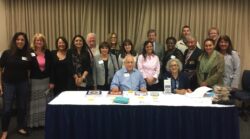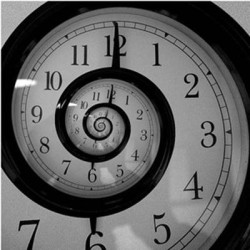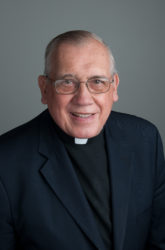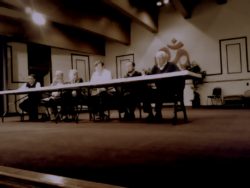Abstract
This paper explains creative approaches to religious diversity and tolerance based on the cultural anthropology theories of Claude Lévi-Strauss. My research was conducted through case studies beginning with a 1990 pilot project in a globalization context, Chicago’s suburban technical corridor. This first case study, the DuPage Interfaith Resource Network (DIRN), pioneered strategies for managing religious conflicts due to changing demographics.
DIRN developed religious literacy strategies and administrative policies within the public schools, a major conflict arena, and were adopted by community service organizations including law enforcement, healthcare, and nonprofit NGOs. The strategies were coupled with programs based on storytelling for greater impact.
The second case study took place in Tulsa, Oklahoma, following the domestic terrorism of the Oklahoma City bombing. In this phase, Oklahoma’s Say No to Hate Coalition adapted the ground work of DIRN to an environment that included active hate groups.
The third case study was generated by the Women’s Council on Diversity in Chattanooga, Tennessee. A combined story-based communication, emotional intelligence, and problem solving system evolved and was field tested in leadership workshops. The resulting Matrix Model Management System emerged through my cross-cultural communication textbook and workbook.
Chattanooga’s final research phase was prompted by a domestic terrorism incident. The System became a cognitive technology built on the platform of combined coalition strategies and religious literacy. The emphasis underscored problem solving and the unconscious bias involved in decision making. The cognitive technology is codified in my Un-Bias Guide Series which has a broad applicability for corporations, NGOs, education institutions, and government agencies.

 I was excited to return to Cincinnati where my father had been the CFO of the American Jewish Archives. I was on the road, speaking on Religious Diversity in our Schools and at Work at the invitation of a Women of Faith event sponsored by American Jewish Committee, Xavier University & the Brueggeman Center for Dialogue, Islamic Center of Greater Cincinnati, and the Jewish Community Relations Council.
I was excited to return to Cincinnati where my father had been the CFO of the American Jewish Archives. I was on the road, speaking on Religious Diversity in our Schools and at Work at the invitation of a Women of Faith event sponsored by American Jewish Committee, Xavier University & the Brueggeman Center for Dialogue, Islamic Center of Greater Cincinnati, and the Jewish Community Relations Council. When the Jewish New Year arrived, I got many questions about faith and calendars from Human Resource departments. They wanted to know why the holiday occurs on a different day each year according to our secular calendar. And they asked about food associated with the holiday. Offering the traditional apples and honey for a sweet New Year was the easy part. Explaining the timing was the real challenge.
When the Jewish New Year arrived, I got many questions about faith and calendars from Human Resource departments. They wanted to know why the holiday occurs on a different day each year according to our secular calendar. And they asked about food associated with the holiday. Offering the traditional apples and honey for a sweet New Year was the easy part. Explaining the timing was the real challenge. The Rev. Dr. John T. Pawlikowski is a Servite Friar priest, Professor Emeritus of Social Ethics, and Former Director of the Catholic-Jewish Studies Program, part of The Bernardin Center for Theology and Ministry, at Chicago’s Catholic Theological Union (CTU). Pawlikowski was appointed to the United States Holocaust Memorial Council by several presidents, chaired the council’s Subcommittee on Church Relations, served on its executive committee, the Committee on Conscience, and academic committee. He also served as president of the International Council of Christians and Jews (ICCJ) and its Abrahamic Forum and currently holds the title of Honorary Life President. Pawlikowski is a member 3 key committees of the Parliament of the World’s Religions (Global Ethic, Peace and Justice, and Climate Action Task Force). He has authored/edited 15 books on Christian-Jewish Relations as well as on social issues such as economic justice, war and peace, and ecological sustainability. He is the former editor of New Theology Review and a member of the editorial board of the Journal for Ecumenical Studies.
The Rev. Dr. John T. Pawlikowski is a Servite Friar priest, Professor Emeritus of Social Ethics, and Former Director of the Catholic-Jewish Studies Program, part of The Bernardin Center for Theology and Ministry, at Chicago’s Catholic Theological Union (CTU). Pawlikowski was appointed to the United States Holocaust Memorial Council by several presidents, chaired the council’s Subcommittee on Church Relations, served on its executive committee, the Committee on Conscience, and academic committee. He also served as president of the International Council of Christians and Jews (ICCJ) and its Abrahamic Forum and currently holds the title of Honorary Life President. Pawlikowski is a member 3 key committees of the Parliament of the World’s Religions (Global Ethic, Peace and Justice, and Climate Action Task Force). He has authored/edited 15 books on Christian-Jewish Relations as well as on social issues such as economic justice, war and peace, and ecological sustainability. He is the former editor of New Theology Review and a member of the editorial board of the Journal for Ecumenical Studies. In a time when racial, political, economic and religious divisions in the United States are increasingly obvious, the people of one southern city, Chattanooga, Tennessee, are attempting, through dialogue, to understand the religious beliefs of one another. On a chilly November Monday evening a group of over fifty people gathered at a Hindu temple for the Sixth Interfaith Panel Discussion. The attendees and panelists were ordinary people, with extra-ordinary beliefs concerning the value of gaining knowledge and understanding of the faith traditions of one another.
In a time when racial, political, economic and religious divisions in the United States are increasingly obvious, the people of one southern city, Chattanooga, Tennessee, are attempting, through dialogue, to understand the religious beliefs of one another. On a chilly November Monday evening a group of over fifty people gathered at a Hindu temple for the Sixth Interfaith Panel Discussion. The attendees and panelists were ordinary people, with extra-ordinary beliefs concerning the value of gaining knowledge and understanding of the faith traditions of one another.